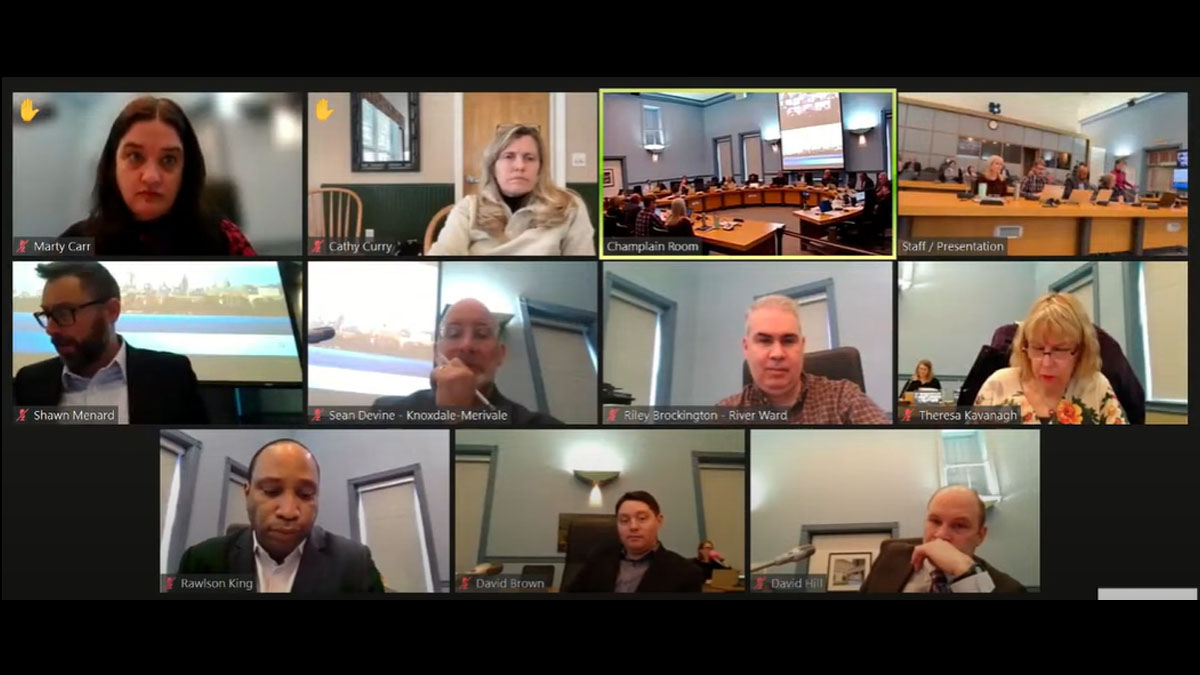The Urban Flood Information Report presented to the City of Ottawa’s Environment and Climate Change Committee March 19 highlights the work the city has done over the years to mitigate flood risks but also warns that flood risks are going to continue to rise in the coming years.
Over the past few years, Ottawa has seen record-breaking floods, major storms and tornadoes. According to the City’s 2022 Climate Vulnerability and Risk Assessment, flooding is one of the primary risks to the city and its residents.
Coun. Marty Carr’s Alta Vista ward saw more flooding reports than anywhere else in Ottawa after extreme rainfall in August, 2023. Out of 486 reported floods, she says 180 were reported in Alta Vista alone.
Carr described the “devastating” impacts on members of the community struggling to clean up even months later, with some discovering they were responsible for tens of thousands of dollars in damages not covered by their insurance policies.
Carr says there must be more community incentives to align homeowner investments with insurance policies “to better protect homeowners and mitigate the impact of future disasters.”
“Residents are concerned,” said Erica Shardlow, program coordinator at Community Associations for Environmental Sustainability (CAFES). “Communities are not prepared for climate disasters…there needs to be better and more public information available.”
“Plans to manage extreme rainfall should ideally include actions from municipal infrastructure but also integrate municipal incentives and involve property owners,” she said.
Shardlow proposes to prioritize integrated living and built systems to slow down, soak up and filter rainwater to prevent water from flooding homes and damaging creeks and rivers. Installing tree trenches would not only reduce the burden on drain pipes, she said, but are a cost-effective opportunity to address flooding and “enhance livability” in the city.
The location and frequency of urban flooding occurring depends on a number of factors, including topography, drainage systems, size of storm and sewer pipes and amount of rainfall.
“The causes of flooding are complex,” said Tyler Hicks, associate director of linear water and customer services. “Protective measures in one area might not work as well in different locations across the city.”
The City’s sewer system is heavily reliant on maintenance, evidenced by more than 2,000 work orders for sewer cleanings and 5,000 sewer repairs completed in 2023 alone. Substantial investments of around $340 million have been allocated towards flood mitigation and climate resilience efforts, including the Combined Sewage Storage Tunnel, a $232 million project that holds runoff water, the Sandy Hill Storage Tank, the Preston Street Combined Sewer System and other initiatives.
Hicks said financial assistance programs are available for protective plumbing devices such as sump pumps and sanitary backwater valves that stop sewage from flowing back into homes when the system is over capacity as part of the Residential Protective Plumbing Program. Eligible residents can apply online.
Studies show that severe weather and increased rainfall has surpassed fire as the leading cause of damage to Canadian homes. The Climate Projections Study (2020) predicts a 15 per cent increase in the amount of precipitation that could fall in a single day by 2050. Total rainfall will continue to increase throughout the years, with heavy rainfall projected to increase by 15 per cent by the 2050s.
“It is important that the City of Ottawa uses a long-term view for plans and strategies to inform how best to use its other tools in the toolkit,” said Hicks.
In the meantime, council recommends homeowners regularly clean out eavestroughs and culverts to ensure their property can withstand extreme rainfall events.
The Climate Resiliency Strategy is still under development. The draft strategy focuses on guiding action and investments that will build a more climate-resilient city by 2050 and is expected to be brought to Council later in 2024.




